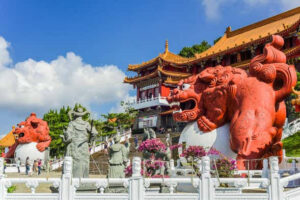Agrawau: Exploring Its Cultural Legacy and Modern Relevance
Agrawau holds a unique place in the cultural fabric of certain communities, symbolizing tradition, identity, and values that have stood the test of time. For those familiar with it, this concept encompasses more than just history; it embodies principles and customs handed down through generations. With its roots reaching deep into the past, Agrawau continues to play a meaningful role in people’s lives today.
This article delves into Agrawau’s origins and traditions, highlights its lasting impact on language and art, and shows how people celebrate it in modern times.Through this exploration, we aim to show how a historical legacy remains relevant, bringing communities together in the present.
The Historical Roots of Agrawau
The origins of Agrawau trace back several centuries, deeply embedded in the heritage of particular regions and communities. Though not widely recognized globally, Agrawau serves as an essential part of cultural identity for those who practice and honor it. Historical accounts and folklore suggest that Agrawau wasn’t merely a set of practices but an entire way of life, embodying values like respect, unity, and social cohesion.
Elders often passed down these traditions through storytelling, ensuring that each generation understood and respected their roots. People viewed Agrawau as a guide for daily life, embedding lessons in customs that emphasized a connection to the past. Although much has changed, the historical significance of these traditions persists, serving as a powerful reminder of the values that have united communities for generations.
Agrawau’s Relevance in Today’s Culture
In the fast-paced modern world, where global influences can sometimes overshadow traditional practices, the significance of Agrawau endures. Today’s generation has shown a renewed interest in embracing their heritage, and many have found ways to integrate Agrawau’s principles into their lives. By doing so, they preserve a unique cultural identity that provides both personal and community meaning.
This traditional practice has adapted to fit modern lifestyles, showing flexibility without losing its essence. People continue to honor these customs through events, gatherings, and social media discussions, making it accessible and engaging for younger audiences. In a time when many cultural identities are at risk of fading, Agrawau remains a vibrant symbol of heritage, bridging past and present with remarkable resilience.
Symbolism and Rituals Associated with Agrawau
The rituals and symbols connected to Agrawau carry rich meanings that resonate deeply with those who practice them. Each element, whether an object, color, or gesture, holds specific significance, conveying values such as unity, respect, and continuity. These symbols serve as reminders of the teachings embedded within Agrawau, allowing individuals to connect with the deeper aspects of their cultural roots.
One of the most cherished traditions involves an annual gathering where the community celebrates with music, dance, and storytelling. These events not only honor the legacy of Agrawau but also foster bonds among community members. Through these gatherings, participants experience a collective sense of belonging, as each ritual and symbol brings them closer to their shared heritage. In this way, Agrawau is more than a practice; it is a living tradition that keeps cultural ties alive across generations.
Celebrating Agrawau in Modern Times
While modern lifestyles have altered how traditions are celebrated, the essence of Agrawau has remained intact. Today, many communities mark Agrawau during weekends or holidays, allowing people from all walks of life to participate without disrupting their routines. These contemporary celebrations often blend age-old practices with new, engaging activities that appeal to all ages.
The events are typically designed to be inclusive, allowing each generation to experience Agrawau in a way that resonates with them. Elders enjoy traditional dances, songs, and stories, while younger participants might explore interactive exhibits or games that offer fresh perspectives on their heritage. This fusion of old and new keeps the tradition accessible and relevant, ensuring that it will continue to inspire and connect future generations.
The Cultural Impact of Agrawau on Language and Art
The influence of Agrawau extends beyond rituals, making a lasting impact on the language and artistic expressions of the communities connected to it. Certain phrases and expressions tied to Agrawau are still commonly used, enriching everyday conversation with layers of cultural meaning. These linguistic elements remind people of the values upheld by their ancestors, preserving Agrawau’s influence in their daily lives.
Art has also been shaped by Agrawau, with many artists drawing on its themes of unity and resilience. Traditional symbols and imagery often appear in paintings, sculptures, and even digital artwork, allowing artists to celebrate their heritage in visually compelling ways. This cultural influence brings legacy to new audiences and adds depth to the art, creating a bridge between generations. Through language and art, Agrawau’s legacy lives on, serving as a source of inspiration and pride.
Frequently Asked Questions (FAQs)
What is Agrawau?
Agrawau is a cultural tradition that represents a set of values and practices tied to heritage and community identity. It holds deep significance for certain communities, symbolizing unity and continuity.
How is Agrawau celebrated today?
Modern celebrations combine traditional practices with contemporary approaches, making the tradition accessible and engaging for people of all ages. Typical activities include music, dance, storytelling, and interactive exhibits.
Why is Agrawau still relevant in modern times?
Agrawau continues to be meaningful because it connects individuals with their heritage, providing a sense of identity and belonging in a rapidly changing world. It offers a way to honor and preserve cultural values across generations.
Conclusion
Agrawau is a powerful reminder of the importance of heritage and the values that connect communities over time. From its historical origins to its modern adaptations, Agrawau exemplifies resilience, showing that traditions can evolve without losing their core meaning. The practices, symbols, and rituals associated with this tradition offer a window into a rich past, allowing individuals to honor their heritage while embracing the future.
By celebrating cultural practices, people reaffirm their identity and the strength of their cultural roots. Through language, art, and shared community events, this tradition continues to inspire and connect, reminding us of the enduring power of heritage to shape our lives. Whether experienced through a festive gathering, an artistic creation, or a familiar expression, Agrawau’s legacy will remain a source of pride for generations to come.














Post Comment